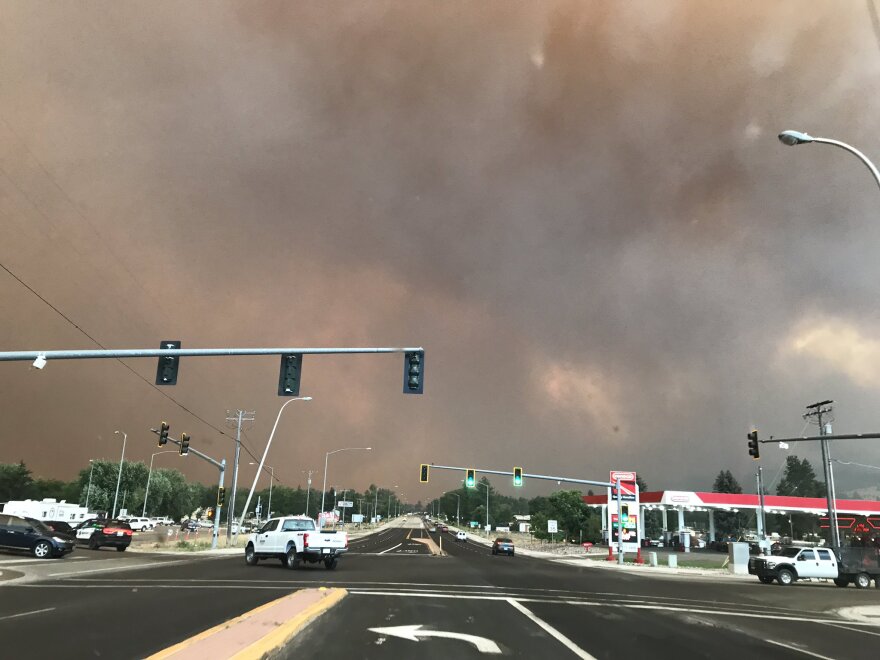The federal government has denied Montana’s request for $44 million dollars in disaster funding following the historic 2017 fire season that burned over a million acres across the state.
That $44 million was above and beyond what the Federal Emergency Management Agency (FEMA), has already granted the state in relief funds. That number is $11 million, covering some of the expenses for eight different fires. State officials decided to request additional aid, under a presidential major disaster declaration, even though it was a long shot.
"It certainly could have meant replenishing some of that fire fund that was used up," says Delila Bruno, the administrator of Montana Disaster and Emergency Services.
Montana spent its entire two-year $60 million emergency fund for wildfire suppression in one year, and used it up even before last fire season ended.
Governor Steve Bullock sent a letter to President Donald Trump in mid-November, amid the ongoing special legislative session, requesting the additional disaster aid.
The letter described destroyed crops and livestock, persistent smoke hanging over Montana towns, the Montana National Guard joining front line fire crews for the first time in history, and two firefighters killed on the job.

FEMA sent Montana a letter denying the disaster aid at the end of December. That means Montana will have to make do with the eight FEMA grants the agency did approve, to help the state cover the costs of some of the biggest disaster fires that burned last year, including the Lodgepole, Rice Ridge and Lolo Peak Fires.
"Those [FEMA grants], we’ve taken advantage of as much as we think we can," Bruno says. "A lot of those costs that are incurred are because you're going and putting little fires out, and that’s the part that gets overlooked. That one acre fire that you put out could have saved a town, could have saved somebody’s farm, could have saved a lot of different infrastructure. But because you did such a good job at it you don’t have the dollar amount in damage to show the folks."
Bruno says Montana asked for a presidential major disaster declaration for something that was hard to see — the $44 million it took to prevent small fires from becoming big fires.
Normally requests for major disaster relief from FEMA are for a hurricanes or earthquakes or floods, one brief major event with a huge impact. Bruno says a long drawn out fire season, with lots of little ongoing costs, just doesn’t fit the part.
"From these wildfire prone states, what should we do in the next few years to change some policy, to change some rules on wildfires and make sure that they are eligible for disaster assistance.”
In FEMA’s response to the state request for disaster funding, Brock Long, the agency’s administrator wrote, “It has been determined that the damage from this event was not of such severity and magnitude as to be beyond the capabilities of the state and affected local governments.”

Montana Public Radio was not able to reach a member of FEMA for an interview. However, FEMA staff did tell MTPR that the state’s grouping of fire events in a single emergency declaration request was out of the ordinary.
Montana Disaster and Emergency Services’ Bruno agrees.
“I think what was unique about this is that you don’t really see too many disaster declarations go in for wildfire. Wildfires really aren't something that are typically considered for presidential disaster declarations.”
All three members of Montana’s congressional delegation supported the state’s request for funding under a major disaster declaration.
Democratic Senator Jon Tester says another reason FEMA likely turned down Montana’s request is because the agency doesn't have the money.
“I think it puts Montana's budget in even more perilous situation," Tester says. "And you know, the fact is that fire is a natural disaster. And I know that FEMA's been pounded a lot by floods, and hurricanes and all sorts of national disasters, but the truth is that fire also creates havoc.”
Republican Congressman Greg Gianforte said, “I would encourage the governor to appeal this decision and I’ll do what I can on my end and stand ready to help.”
According to a spokesperson for the governor, the state does not anticipate appealing the request, but will work with the congressional delegation to search for further disaster funding options.
A spokesperson for Republican Senator Steve Daines says Agriculture Secretary Sonny Perdue has responded to Daines’ request to expand the timeline for farmers and ranchers impacted by last year’s drought and wildfires to seek relief. The new deadline is June 1.
According to the state’s Department of Natural Resources and Conservation, the more than $11 million Montana will see from FEMA will not be fully received by the state for two or three years. That’s because of delays in the billing process between federal and state partners.



